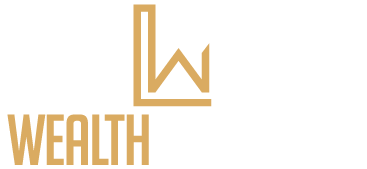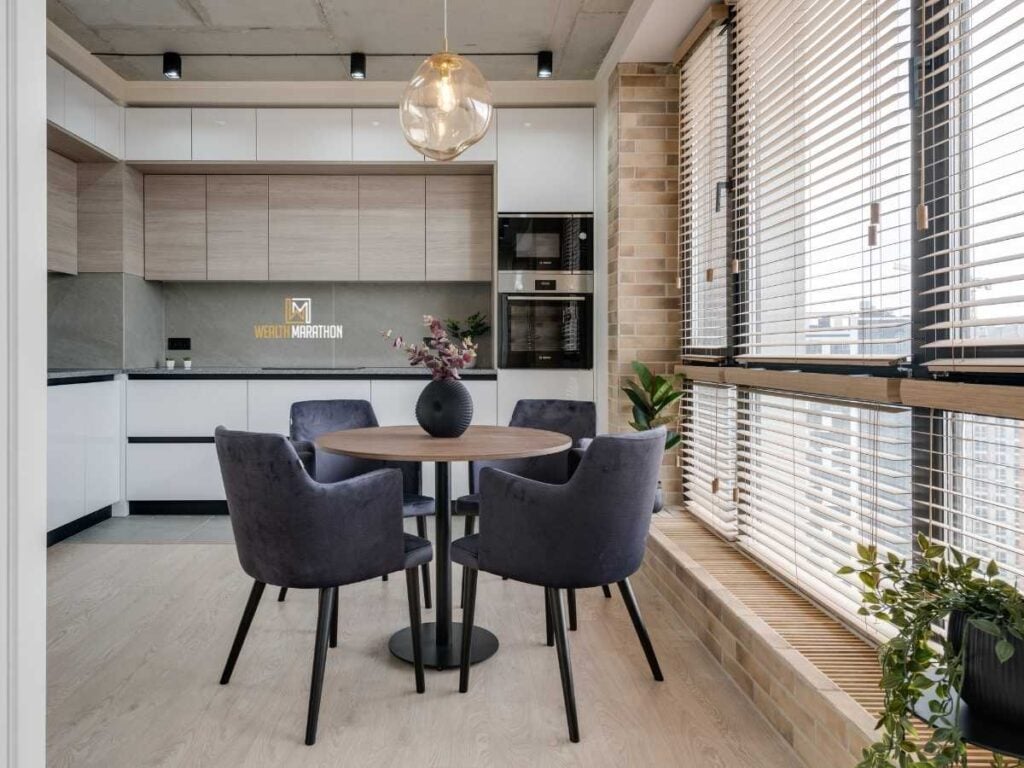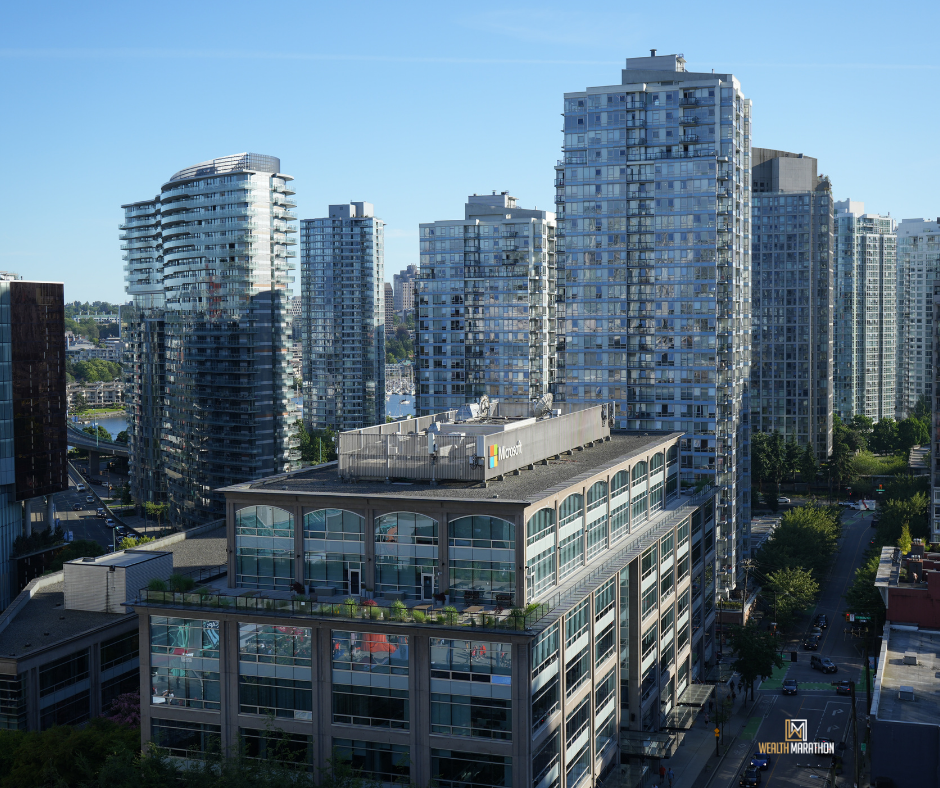What is an Insured Mortgage?

An insured mortgage, often referred to as a high-ratio mortgage, is a type of mortgage in which the borrower has less than 20% of the downpayment of the purchase price, which provides default insurance to the lender in the event the borrower defaults on the loan. Mortgage insurance protects the lender if a borrower defaults on the loan, but the borrower pays the premium for the insurance.
What is an Insured Mortgage Video Summary
The History of insured Mortgages in Canada
Before mortgage insurance, most of the mortgage lending done in Canada was by trust and insurance loan companies. The government allowed banks to acquire trust companies with the Bank Act of 1992, effectively making banks the largest mortgage lenders as they acquired those trust and insurance companies. The typical loan-to-value ratio for homes used to be 50 percent until 1935. This meant that if you were planning on buying a home, you had to have 50 percent of the purchase price as a down payment, which was a tall order and reduced the number of people who could buy a home.
In 1954, mortgage insurance was introduced, allowing higher loans-to-value above 80 percent of the purchase price. The introduction of mortgage insurance allowed lending up to 95% of the home’s value as long as their loans met the insurance requirement. Mortgage insurance was offered through Canada Mortgage and Housing Corporation (CMHC) and private insurers. Lenders who took this insurance would have their loan 100 percent guaranteed if taking a CMHC insured loan, and if they went with an approved private insurer, the mortgage loan would be guaranteed by the government to 90 percent.
Today, mortgage insurance is essential for helping people purchase a home and is a critical income source for lenders.
Why is Insured Mortgage Required?
Mortgage insurance is required to encourage lenders to provide mortgage loans at a higher home value ratio. Before the introduction of mortgage insurance, lenders were hesitant to lend on homes where the borrower did you have a sufficient down payment. The reason for this was it increased their loan exposure and required them to put aside a greater amount of money in reserve in the event the borrower defaults.
A lender would prefer to lend 50% of a home’s value as if the borrower defaults; they only lent 50% of the value of the home and, as such, could foreclose on the house and likely be able to sell at a price to recover their money. While this works for the lender in protecting its business, it also makes it harder for people to get into homeownership as most people would struggle to save 50 percent of a home price they wish to purchase.
With the introduction of an insured mortgage, the lender doesn’t have to worry about default risk. As such, they are willing to lend at a higher loan-to-value of a home (up to 95%), which enables more people to purchase a home with a smaller down payment.
How Does Mortgage Insurance Work?
Mortgage insurance operates like most insurance products. The premium paid to obtain an insured mortgage is placed into a pool. In the event of a loan default for which the home sale is insufficient to cover the lender’s loss, the general premium pool can be accessed and used to make the lender whole. The premium paid isn’t all revenue to the insurer but divided into income and claims savings that are set as a side in the event of a claim. The idea behind mortgage insurance is to get a large pool of insured mortgages with the hope of only paying out a small amount of default each year.
What type of Insured Mortgages are there?
You can obtain three types of mortgage insurance: insured, insurable, and uninsurable.
Insured Mortgages
An insured mortgage is a mortgage with less than 20 percent down payment and a purchase price of less than $1,00,000. This type of mortgage protects the lender if the borrower defaults on the loan. To qualify for an insured mortgage, the property and borrower must meet the insurer’s guidelines. These guidelines can change often, but typically you will need to meet the following requirements;
- The property being purchased has to be located in Canada.
- The property must be suitable and available for year-round occupancy with year-round access.
- The maximum purchase prices or as-improved property value must be below $1,00,000.
- You must have at least 5% of the purchase price up to $500,000 and an additional 10% of the purchase price on the remaining balance above $500,000.
- Your total debt service (TDS) typically needs to be below 42% but can go up to 44% depending on the strength of the borrower’s application.
- The total gross debt service (GDS) usually has to be below 32% but can go up to 39%, depending on the strength of the application.
- Amortization cannot exceed 25 years.
- The minimum down payment has to be from your own source. However, a gift from an immediate family is acceptable for the remaining amount.
- The maximum number of dwelling units is 4, and the minimum is 1.
- The borrower must have a minimum credit score of 600
Uninsurable Mortgage
An uninsurable mortgage is a loan that doesn’t require mortgage insurance because the borrow has at least a 20 percent down payment or doesn’t meet the insurer’s program guidelines. These loans are referred to as conventional loans, and the borrower isn’t required to get mortgage insurance.
Insurable Mortgage
An insurable mortgage loan qualifies for mortgage insurance, but the borrower is not required to obtain mortgage insurance. For example, a borrower might have a 20 percent down payment and therefore isn’t required to purchase mortgage insurance. However, the lender may want mortgage insurance to get greater protection or make the loan more enticing to sell to investors.
In that scenario, the lender could back-end insure the loan. When the lender does this, they will be the one paying the insurance premium directly. However, most lenders will price this cost into the rate they charge on the loan. As such, insurable mortgage loans tend to have a higher interest rate than an insured mortgage loan.
If the lender wishes to insure the mortgage, the loan requirements will be the same as an insured mortgage loan.
Who offers Mortgage Insurance in Canada?
The three companies that offer mortgage insurance in Canada are Canada Mortgage and Housing Corporation (CMHC), Segan (formerly known as Genworth Canada), and Canada Guaranty. Most of the mortgage business goes to CMHC due to its 100% guarantee offered by CMHC, while private lenders get a 90% loan guaranteed in the event of insolvency.
Who Does Mortgage Insurance Benefit?
Mortgage insurance is a product designed to protect the lender against loan default. The lender is made whole if the borrower defaults on the loan as long as they followed and qualified the borrower correctly under the insured guidelines.
Additionally, as previously noted, CMHC-insured loans provided by federally regulated banks have the benefit of not requiring additional capital reserves. This means that the lender does not have to put away money for the loan if the borrower defaults as it’s considered a government debt, which means it’s 100% guaranteed. As such, they can lend more money as they do not have to put more aside in the event of a default.
Regarding the borrower, mortgage insurance allows you to purchase a house with a smaller down payment. An insured mortgage only requires 5% of the purchase price as a down payment.
Who Pays the Premium on an Insured Mortgage?
The lender is responsible for paying the mortgage insurance premium as they are applying for it. However, most lenders pass this cost onto the borrower, and therefore the borrower usually ends up paying the premium on behalf of the lender.
Borrowers can pay the mortgage insurance in one of two ways; include the premium into their monthly mortgage payment or pay it as a lump sum payment to the lender, who will then submit the premium to the insurer.
Insurance Premium Paid
The amount of mortgage premium paid is determined based on the mortgage loan-to-value. It’s possible to save some money on the mortgage insurance premium if you’re purchasing a home that’s energy efficient or plans to renovate the home after purchase to make it more energy efficient. Additionally, provincial sales tax might be applied to the premium depending on the province of purchase.
CMHC Mortgage Premium Rates
| Loan to Value | Premium Charged |
| Up to and including 65% | 0.60% |
| Up to and including 75% | 1.70% |
| Up to and including 80% | 2.40% |
| Up to and including 85% | 2.80% |
| Up to and including 90% | 3.10% |
| Up to and including 95% | 4.00% |
The total premium payable on a $500,000 purchase price with 5% down-payment ($25,000) would amount to $19,000. The total mortgage loan would be $494,000 if you rolled the mortgage premium into the mortgage payment.
What’s the Best Way to Pay the Mortgage Premium?
Deciding whether to pay the mortgage premium directly as a lump sum or include it in your mortgage payment depends on each person’s unique citation. However, there are some things to consider with both options.
If you roll the premium into the mortgage payment, you effectively increase the total interest you would pay as the total loan amount increases. There’s also an opportunity cost that needs to be considered when you pay the premium through the monthly payment, as the premium amount could have been invested over the same time.
The benefit of a lump sum payment is you eliminate any additional interest costs. However, you still have opportunity cost as the funds cannot be invested as you’ve now provided a premium to the insurer that will give you no benefit or protection.
There isn’t a universal right or wrong method for paying the premium. Still, most people roll the premium into the mortgage payment as most first-time buyers do not have excess funds. Even if they did, it might be better to use those funds to reduce the overall mortgage loan amount or put it aside as an additional emergency fund.
What Type of Properties can you get with Insured Mortgages?
CMHC offers insured mortgages on both residential and commercial properties. As such, the variety of properties you can place mortgage insurance on is wide and includes but is not limited to single-family homes, row homes, duplexes, mobile homes, manufactured homes, rental properties, retirement homes, or condominiums. Insured mortgages do not restrict the type of fee simple ownership as well.
What Happens if you Default on an Insured Mortgage Loan?
If an insured loan is defaulted on, the lender can look to have their loan losses covered through mortgage insurance placed on the loan. For the borrower, there is no protection offered by the mortgage insurance. However, in some cases, an insurer might be able to work with a borrower to avoid a foreclosure scenario. If you have difficulty making your mortgage payment, contact your lender directly, as they will be in the best position to assist you.
What Type of Insured Mortage Programs are Available?
Lenders have a whole host of mortgage programs they can access that the insurance companies offer. Most of the programs provided are similar among all the insurance providers, but some are only available at some insurance. Here is a list of some of the types of mortgage programs available.
- First-Time Home Buyer Program (offered by CMHC, Segan, and Canada Guaranty)
- This program allows a loan to be insured with as little as 5% of the purchase price. CMHC’s program is called CMHC Purchase, Segan is called Homebuyer 95 Progam, and Canada Guaranty is called Downpayment Advantage.
- Investment Mortgage (offered by CMHC, Segan, and Canada Guaranty)
- This program allows investment property loans to be insured with as little as 5%.
- Purchase Plus Improvement (offered by CMHC, Segan, and Canada Guaranty)
- This program allows the borrower to add their renovation cost to their mortgage loan after occupying the property with as little as 5% down.
- Self-Employed Insured Mortgage (offered by CMHC, Segan, and Canada Guaranty)
- This program assists self-employed individuals in purchasing a home with as little as 5% down.
- Second Home Insured Mortgage (offered by Segan)
- This program allows borrowers to purchase a second home with an insured mortgage.
- New to Canada Insured Mortgage (offered by CMHC, Segan, and Canada Guaranty)
- This program helps newcomers to Canada obtain an insured mortgage with as little as 5% down.
- Eco Plus (offered by CMHC and Segan)
- This program provides some premium discounts to borrowers who purchase energy-efficient homes or make improvements that make the home energy efficient.
- Family Plan Program (offered by CMHC, Segan, and Canada Guaranty)
- This program allows family members to purchase a home together
- Self-Directed RRSP Insured Mortgage (offered by Segan)
- Borrowed Down Payment Insured Mortgage (offered by Segan)
- Second Mortgage Program Insured Mortgage (offered by Segan)
- New Construction Home Insured Mortgage (offered by CMHC, Segan, and Canada Guaranty)
What Happens if you Sell a Home that has an Insured Mortgage?
Most insured mortgages would have portability if they commenced after April 1st, 1996. The portability feature means if you sell a currently insured home and plan to purchase another one that will be insured, you can save some money on the premium. To do this, the borrowers must be the same as the original insured loan, and the property must be located in Canada.
It’s also possible to assume an insured mortgage from someone else. The assumption clause within mortgages allows someone to take over your mortgage, assuming they meet the requirement and qualifications to do so. In addition to meeting the lender’s guidelines, the person looking to take over the insured mortgage would have to be approved by the insurer before they can assume the insured mortgage.
Insured mortgage rules constantly change, and programs get updated. If you require assistance with your mortgage or want more details on some of the insurance programs available, you can contact me directly at 604-394-2078. In my book Master Your Mortgage: What the Bank Won’t Tell You About Buying the Right Home, I detail the mortgage approval process thoroughly to provide a detailed, behind-the-scenes look at how exactly you get approved for a mortgage.







Responses